Blog
Custom-Sized Shoes provided for Stratford Festival Performers
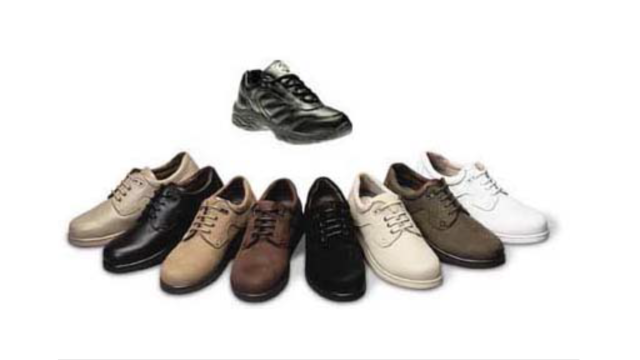 Specially crafted shoes are made for the various actors and dancers performing at the annually-held Stratford Festival and its several productions. The Stratford shoemakers crank out about 1000 pairs of shoes each year in preparation for the festival. Performers often request customized specifications for their shoes to optimize foot support while on stage.
Specially crafted shoes are made for the various actors and dancers performing at the annually-held Stratford Festival and its several productions. The Stratford shoemakers crank out about 1000 pairs of shoes each year in preparation for the festival. Performers often request customized specifications for their shoes to optimize foot support while on stage.
The theater’s upcoming production of Crazy For You features numerous tap dancers; several of these dancers have requested altered shoe sizes to allow a specific amount of toe room for dancing. Shoes are either altered by the Stratford shoemakers themselves or off-site. “It makes a difference to how you perform, especially with tap dancing,” said Kerry Gage, associate choreographer of Crazy for You. “Everybody’s feet are entirely different.”
Getting the right shoe size is important for those who rely on the performance of their feet. If you would like more information in determining your shoe size, speak to one of our podiatrists of Univeristy Foot & Ankle Center, LLC. Our doctors can assist you with all of your foot and ankle concerns.
Getting the Right Shoe Size
Sometimes it may be difficult finding the right shoe size especially because shoe sizes tend to vary depending on the brand and company you are looking for. A size 6 for one brand may be a size 7 in another. Although many people know their exact shoe size, it can range within 2 sizes depending on where they shop.
So it is important not to always go for a size 7 just because you think you might be a size 7 universally. It is best to try on the shoe and walk around for a bit to see how it fits and how it feels. Comfort is essential and the fitting has to be well otherwise it can lead to blisters, bruises at the back of the ankle and it can also hurt your toes if the shoe is too tight for example.
People walk a lot, so it is important for you to find what is comfortable when it is possible.
For more information about Getting the Right Shoe Size, follow the link below.
If you have any questions, please contact one of our offices located in East Brunswick and Monroe Township, NJ. We offer all the newest in diagnostic and treatment technologies for all your foot and ankle conditions.
Read more about Getting the Right Shoe Size
Several Hundred Children Given Shoes from Samaritan’s Feet
 Northeastern Indiana Credit Union Chapter (NEICUC) recently joined forces with Samaritan’s Feet International in creating the Samaritan’s Feet event. NEICUC financed, coordinated logistics, and recruited 40 volunteers for the event that provided three hundred new pairs of shoes for members of the Boys & Girls Club and the Euell A. Wilson Center. Members also had the option of having their feet washed by one of the volunteers to spread hope and sharing. Samaritan’s Feet leaders believe that they can show the youth that their dreams are attainable. “It is wonderful to see the collaborative efforts that have been done on behalf of the youth in our community,” said Joe Jordan, President and CEO of the Boys & Girls Clubs of Fort Wayne.
Northeastern Indiana Credit Union Chapter (NEICUC) recently joined forces with Samaritan’s Feet International in creating the Samaritan’s Feet event. NEICUC financed, coordinated logistics, and recruited 40 volunteers for the event that provided three hundred new pairs of shoes for members of the Boys & Girls Club and the Euell A. Wilson Center. Members also had the option of having their feet washed by one of the volunteers to spread hope and sharing. Samaritan’s Feet leaders believe that they can show the youth that their dreams are attainable. “It is wonderful to see the collaborative efforts that have been done on behalf of the youth in our community,” said Joe Jordan, President and CEO of the Boys & Girls Clubs of Fort Wayne.
To ensure that their feet will grow and develop healthily, children need to proper fitting shoes on their feet. For more information about determining proper shoe fitting for children, see podiatrists Dr. Genine Befumo & Dr. Mark Berger of University Foot & Ankle Center, LLC.. Our doctors will treat your foot and ankle needs.
Proper Shoe Fitting
A common concern when it comes to foot health, having properly fitted shoes can help prevent injuries to the foot. Out feet affect our posture and gait, which in turn affects the biomechanics and overall bodily structure. With 33 joints, 26 bones, and over 100 ligaments, the potential for serious injury is much greater than one realizes. Although the feet cease growth in adulthood, they still change shape as they mature. Here are some factors to consider when it comes to investing in properly fitting shoes:
- Be sure the shoes fit correctly right away
- Ensure the ball of your foot fits comfortably in the widest portion of the shoes
- Even though they may look fashionable, improperly fitting shoes can either create adverse conditions or exacerbate existing ones you may already have
- Walk along a carpeted surface to ensure the shoes comfortably fit during normal activity
For more information about Proper Shoe Fitting, follow the link below.
If you have any questions, please contact one of our offices located in East Brunswick and Monroe Township, NJ. We offer the newest diagnostic and treatment technologies for all your foot care needs.
Read more about Proper Shoe Fitting
Designer Shoes Cause Blisters for Virgin Atlantic
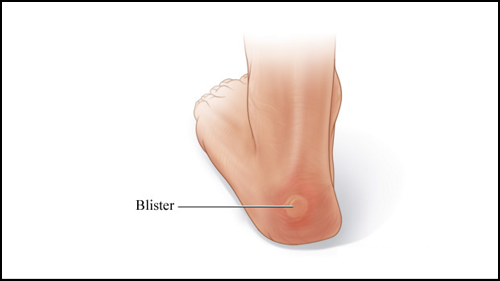 Over the years there have been plenty of collaborations between airlines and big time fashion designers. Some of these include Pierre Balmain for Singapore Airlines and Christian Lacroix for Air France. Recently, Virgin Atlantic has made an agreement with Vivienne Westwood on creating the new flight attendant and crew member uniforms. The global wearer trial for the uniforms has had positive reviews; however, plenty employees have described blisters from the designer’s shoes. The shoes are an adaptation of Westwood’s signature heels. A spokesperson for the airline responded to the reports declaring that the company is working to ensure that its employees are “happy and comfortable in their working environment.”
Over the years there have been plenty of collaborations between airlines and big time fashion designers. Some of these include Pierre Balmain for Singapore Airlines and Christian Lacroix for Air France. Recently, Virgin Atlantic has made an agreement with Vivienne Westwood on creating the new flight attendant and crew member uniforms. The global wearer trial for the uniforms has had positive reviews; however, plenty employees have described blisters from the designer’s shoes. The shoes are an adaptation of Westwood’s signature heels. A spokesperson for the airline responded to the reports declaring that the company is working to ensure that its employees are “happy and comfortable in their working environment.”
If you work in an environment that requires extensive standing and walking, you may develop blisters on the feet. To learn more about blister treatment and prevention, speak to Dr. Genine Befumo and Dr. Mark Berger of University Foot & Ankle Center, LLC. Our doctors will assist you with all of your foot and ankle concerns and answer any of your related questions.
Blisters on the Feet
When tight or ill-fitting footwear is worn, many times a foot blister may develop. Blisters can even develop by constant rubbing from the shoe, often times leading to pain.
What is a Foot Blister?
A foot blister is a small pocket that is filled with fluid, forming on the upper most layer of the skin. Blisters are filled with clear fluid, and may lead to drainage of blood or pus if the area has become infected.
How do they Form?
Blisters of the feet are almost always the result of shoe rubbing and constant friction of the skin and material. Long periods of walking in shoes, sandals, or boots which don’t fit properly can result in a blister. Those who often have moisture or humidity in the feet, are prone to blister formation easily.
Prevention & Treatment
Proper care is vital to alleviate pain and prevent infection to the affected area of the foot. The best treatment is to leave them alone. New skin will develop under the blister and during the healing stages, your blister will pop.
For more information about Blisters on the Feet, follow the link below.
If you have any questions please feel free to contact one of our offices located in East Brunswick and Monroe Township, NJ. We offer the newest diagnostic and treatment technologies for all your foot and ankle needs.
Read more about Blisters on the Feet
Non-Surgical Methods to Aid Hammertoes
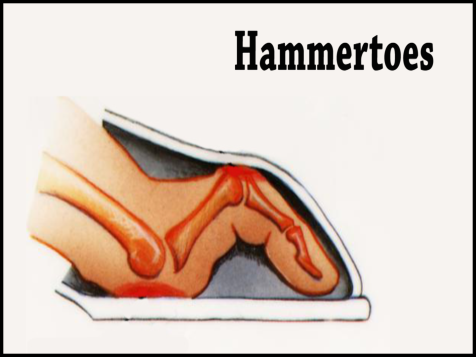 Although many patients suffering from hammertoes would like to receive immediate surgery to get the process over with, many insurance companies will not even consider covering the costs until non-surgical treatments are attempted first. Invasive methods of non-surgical treatment include cortisone injections, analgesic drugs, or anti-inflammatory drugs to help ease the discomfort and swelling caused by hammertoes. Using custom orthotic inserts can help decrease discomfort as well as wearing a splint if the toe is still capable of being straightened are some non-invasive methods. The splint can also keep the toe from rubbing against the top of the toe with its protective padding. Hammertoes can be prevented with proper fitting footwear and by avoiding high heels.
Although many patients suffering from hammertoes would like to receive immediate surgery to get the process over with, many insurance companies will not even consider covering the costs until non-surgical treatments are attempted first. Invasive methods of non-surgical treatment include cortisone injections, analgesic drugs, or anti-inflammatory drugs to help ease the discomfort and swelling caused by hammertoes. Using custom orthotic inserts can help decrease discomfort as well as wearing a splint if the toe is still capable of being straightened are some non-invasive methods. The splint can also keep the toe from rubbing against the top of the toe with its protective padding. Hammertoes can be prevented with proper fitting footwear and by avoiding high heels.
Successful hammertoe correction will often require the assistance of a medical professional. If you would like to make a consultation for a hammertoe, see podiatrist one of our doctors of University Foot and Ankle Center, LLC. We will provide you with quality treatment and attend to all of your foot and ankle needs.
Hammertoe
Hammertoe is little-known a painful condition that affects the second, third and fourth toes involving different joints of the toe and foot. Hammertoe can be caused by many other conditions such as RA (rheumatoid arthritis), osteoarthritis, trauma or injuries to your foot, it can be hereditary and it can also be caused by a cerebral vascular accident. If you wear shoes that are too narrow or short for your feet, it may exacerbate any pain you already have.
It is really important to your overall well-being to seek out medical attention at the first signs of foot pain or anything that may hinder your ability to walk in a normal manner. Taking care of your feet is one of the first steps to being able to live a full and healthy life.
If you have any questions, please feel free to contact one of our offices located in East Brunswick and Monroe Township, NJ. We offer the newest diagnostic and treatment technologies for all your foot care needs.
Read more about hammertoes.
Role of Foot Muscles Studied by University of Queensland
 Recent research from the University of Queensland scientists has shed some light on the role other foot muscles play in arch support. The scientists used an experiment that involved weights to prove this. Upon studying the movement of the muscles in the foot, it became clear that more muscles aid in arch support than originally thought.
Recent research from the University of Queensland scientists has shed some light on the role other foot muscles play in arch support. The scientists used an experiment that involved weights to prove this. Upon studying the movement of the muscles in the foot, it became clear that more muscles aid in arch support than originally thought.
Dr. Glen Lichtwark and his colleagues at the university conducted another experiment using electrical stimulation. When activated, the tissues in the arch began to rise. Lichtwark believes that this could play an innovative role for the feet when it comes to designing footwear, injury rehabilitation and understanding bipedalism.
The biomechanics are the cogs behind the gears that manage your feet. If you would like more information, see podiatrist Dr. Genine Befumo or Dr. Mark Berger of University Foot & Ankle Center, LLC. Dr. Befumo and Dr. Berger can provide in-depth information as well as measure your personal foot biomechanics.
A History of Biomechanics
- Biomechanics dates back to the BC era in Egypt where evidence of professional foot care has been recorded.
- In 1974 biomechanics gained a higher profile from the studies of Merton Root, who claimed that by changing or controlling the forces between the ankle and the foot, corrections or conditions could be implemented to gain strength and coordination to the area.
Modern technology improvements are based on past theories and therapeutic processes providing a better understanding of podiatry concepts for biomechanics. Computers provide accurate determinations about the forces, moments and patterns of the foot and lower legs with the most important information captured.
Advances in materials and more awareness of biomechanics have developed enhanced corrective methods, offering further options for foot-related injuries. Understanding foot biomechanics can help improve and eliminate pain, stopping further stress to the foot.
If you have any questions, please feel free to contact one of our offices located in Monroe Township and East Brunswick, NJ. We offer the newest diagnostic and treatment technologies for all your foot care needs.
Read more about Biomechanics of Podiatry.
Homemade Athlete’s Foot Remedies
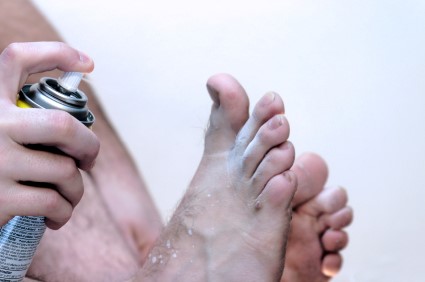 Patients who would rather not have anything to do with prescription drugs can make use of natural remedies to successfully treat Athlete’s foot. For example, be sure to apply apple cider vinegar or tea tree oil directly onto areas of the foot affected by the condition.
Patients who would rather not have anything to do with prescription drugs can make use of natural remedies to successfully treat Athlete’s foot. For example, be sure to apply apple cider vinegar or tea tree oil directly onto areas of the foot affected by the condition.
There are also a number of liquid solutions that can be made to wash the feet in. For one solution, mix one part white vinegar with two parts warm water, soaking the feet can soak for fifteen minutes. You can also grind garlic into a fine paste and mix into a tub of water to create another solution. A third solution is boiling neem leaves in water for ten minutes, allow water to cool, and wash the feet in this twice a day.
Athlete’s foot can be treated with either prescription drugs or natural remedies like those aforementioned. Consult with podiatrist Dr. Genine Befumo of University Foot & Ankle Center. Dr. Befumo will attend to all of your foot and ankle needs.
Athlete’s Foot: The Sole Story
If you suffer from itching, burning, dry, and flaking feet, this may be a sign of athlete's foot. Athlete's foot, also known as tinea pedis, can be extremely contagious, and it often infects shower floors, gyms, socks and shoes, and anywhere else feet may come in contact with. It is commonly found in public changing areas and bathrooms, dormitory style living quarters, around locker rooms and public swimming pools.
Solutions to Combat Athlete’s Foot
- Hydrate your feet by using lotion
- Exfoliate
- Buff off nails
- Use of anti-fungal product
- Examine feet and visit your doctor if any suspicious blisters or cuts are present.
What is Tinea?
- Athlete’s foot is often caused by the same fungus that causes ringworm (tinea).
- Tinea can invade other parts of the body as well, if the proper thriving conditions for it are met.
- Tinea thrives in mostly dark, warm and moist environments.
- Although many people never experience athlete’s foot, around 70% of the population may suffer from tinea at some point.
For more information about Athlete’s Foot, follow the link below.
If you have any questions, please contact one of our offices in East Brunswick and Monroe, NJ. We offer the newest diagnostic and treatment technologies for all your foot care needs.
Read more about Athlete’s Foot
Ingrown Toenails Can Occur in Children
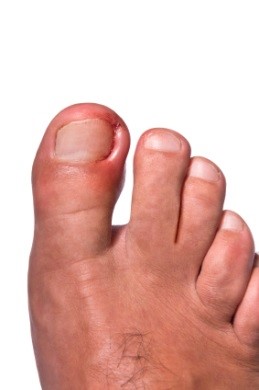 Children are susceptible in developing ingrown toenails in their feet for a myriad of reasons. One of the main ways a child can get an ingrown toenail is by cutting his or her nails too short. To prevent such an occurrence, cut their nails evenly and be sure not to trim them down too much. Ingrown nails may also occur if a child wears socks and shoes that do not adequately cover his or her feet.
Children are susceptible in developing ingrown toenails in their feet for a myriad of reasons. One of the main ways a child can get an ingrown toenail is by cutting his or her nails too short. To prevent such an occurrence, cut their nails evenly and be sure not to trim them down too much. Ingrown nails may also occur if a child wears socks and shoes that do not adequately cover his or her feet.
Other cases of ingrown toenails can simply be caused by a genetic predisposition to curved nails. No matter how the ingrown toenail was caused, do not attempt to treat this condition at home. Removing an ingrown nail with a “bathroom surgery” can lead to a bacterial infection.
Ingrown toenails are terribly uncomfortable, and in the worst cases surgery might be required to get rid of them. If you think you have an ingrown toenail, consult podiatrist Dr. Genine Befumo of University Foot & Ankle Center. Dr. Befumo will confirm your diagnosis and do everything she can to treat your problem.
Ingrown Toenails Causes
Ingrown toenails occur when a toenail grows sideways into the bed of the nail, causing pain, swelling, and possibly infection.
There are a number of risk factors for ingrown toenails. Some include cutting your nails too short, participating in strenuous sports, diabetes, obesity, and fungal infection. Some are genetically predisposed to ingrown nails, although wearing ill-fitting or damp shoes can exacerbate the problem.
Treatment
There are a number of steps you can take to treat ingrown nails:
-Let your toenails grow out
-Soak the toes in hot water with antibiotic soap or Epsom salts
-Placing a piece of cotton under the affected nail may allow the toe to grow up instead of into the nail bed
-Rest with your feet up
If however, your pain is severe, or you see red streaks running up your leg, you should see a podiatrist. Your podiatrist may make a small incision and remove part of the toe nail to relieve the pressure. A local anesthetic may be used to lessen the discomfort of the operation. Topical medication may also be prescribed to prevent the regrowth of the problem nail.
If you have any questions, please contact one of our offices in East Brunswick and Monroe, NJ. We offer the newest diagnostic and treatment technologies for all your foot care needs.
Read more about Ingrown Toenails
Scientists Research Role of Foot Muscles
 University of Queensland scientists focused their research efforts and discovered the role foot muscles play in arch support. To prove that it isn’t just the plantar fascia, an experiment involving weights was conducted. The scientists monitored the responses of the muscles in their feet as the subjects moved.
University of Queensland scientists focused their research efforts and discovered the role foot muscles play in arch support. To prove that it isn’t just the plantar fascia, an experiment involving weights was conducted. The scientists monitored the responses of the muscles in their feet as the subjects moved.
Another experiment involving electrical stimulation was performed soon after, which showed that when activated, these tissues cause the arch to rise. Dr. Glen Lichtwark believes this could play an important role in fields focusing on the feet. This includes footwear design, injury rehabilitation, and even the biological understanding of bipedalism.
The biomechanics are the cogs behind the gears that manage your feet. If you would like more information, see podiatrist Dr. Genine Befumo of University Foot & Ankle Center. Dr. Befumo can provide in-depth information as well as measure your personal foot biomechanics.
A History of Biomechanics
- Biomechanics dates back to the BC era in Egypt where evidence of professional foot care has been recorded.
- In 1974 biomechanics gained a higher profile from the studies of Merton Root, who claimed that by changing or controlling the forces between the ankle and the foot, corrections or conditions could be implemented to gain strength and coordination to the area.
Modern technology improvements are based on past theories and therapeutic processes providing a better understanding of podiatry concepts for biomechanics. Computers provide accurate determinations about the forces, moments and patterns of the foot and lower legs with the most important information captured.
Advances in materials and more awareness of biomechanics have developed enhanced corrective methods, offering further options for foot-related injuries. Understanding foot biomechanics can help improve and eliminate pain, stopping further stress to the foot.
If you have any questions, please contact one of our offices in East Brunswick and Monroe, NJ. We offer the newest diagnostic and treatment technologies for all your foot care needs.
Read more about Biomechanics of Podiatry.
Basanta Roy Loses Hammertoe but Retains Passion for Mountaineering
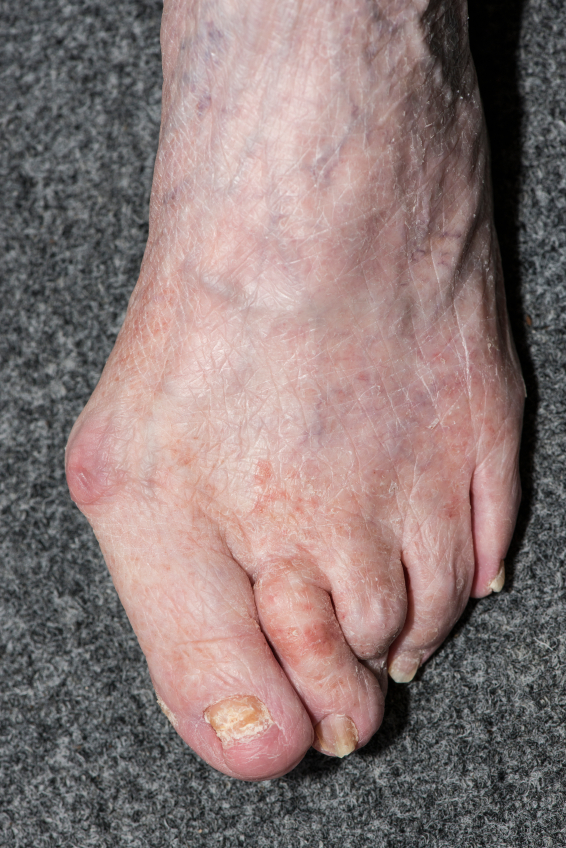 Basanta Kumar Singha Roy is planning to scale the Neelkanth peak of the Garhwal Himalayas sometime this August. This will be his first time mountain climbing again after a failed expedition to the top of Dhaulagiri last year, which ended in disaster when his oxygen canister sprung a leak. While his friend rushed to their camp to get help, Roy was left alone on the mountain in freezing conditions. After he finally got to the hospital doctors had to amputate several of his toes, including a hammertoe on his right foot.
Basanta Kumar Singha Roy is planning to scale the Neelkanth peak of the Garhwal Himalayas sometime this August. This will be his first time mountain climbing again after a failed expedition to the top of Dhaulagiri last year, which ended in disaster when his oxygen canister sprung a leak. While his friend rushed to their camp to get help, Roy was left alone on the mountain in freezing conditions. After he finally got to the hospital doctors had to amputate several of his toes, including a hammertoe on his right foot.
Fortunately Roy wasn’t too daunted by his loss. He has been making preparations for his trip to the Himlayas since the Dhaulagiri incident, and now he’s ready to stage his triumphant return to mountaineering. “Making a comeback was not that tough, because mountaineering has been a passion all my life and I owe it to my family because of their full support,” he said.
Hammertoes can be debilitating, but Roy’s case shows that it’s possible to make a full recovery from them. If you find yourself with this foot deformity, visit podiatrist Dr. Genine Befumo of University Foot & Ankle Center. Dr. Befumo can determine whether your condition is in fact a hammertoe and do everything in her power to treat you.
Hammertoe
Hammertoe is little-known a painful condition that affects the second, third and fourth toes involving different joints of the toe and foot. Hammertoe can be caused by many other conditions such as RA (rheumatoid arthritis), osteoarthritis, trauma or injuries to your foot, it can be hereditary and it can also be caused by a cerebral vascular accident. If you wear shoes that are too narrow or short for your feet, it may exacerbate any pain you already have.
It is really important to your overall well-being to seek out medical attention at the first signs of foot pain or anything that may hinder your ability to walk in a normal manner. Taking care of your feet is one of the first steps to being able to live a full and healthy life.
If you have any questions, please contact one of our offices in East Brunswick and Monroe, NJ. We offer the newest diagnostic and treatment technologies for all your foot care needs.
Read more about Hammertoes
Mixed Martial Artist Sustains Fractured Toe in Fight
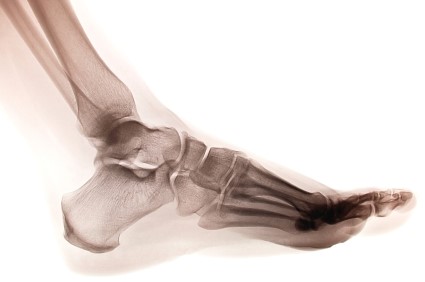 Uriah Hall defeated Thiago Santos at UFC 175 this week but didn’t leave the cage unscathed. Hall sustained a badly broken toe, presumably during the fight. The commentators remain unsure when or how exactly the injury occurred, but it became noticeable that Hall was limping midway through the first round after countering a powerful kick from his opponent.
Uriah Hall defeated Thiago Santos at UFC 175 this week but didn’t leave the cage unscathed. Hall sustained a badly broken toe, presumably during the fight. The commentators remain unsure when or how exactly the injury occurred, but it became noticeable that Hall was limping midway through the first round after countering a powerful kick from his opponent.
Hall clearly appeared to be having difficulty moving around after that, but he somehow managed to ignore the pain and beat Santos into submission. After the fight he posted a photograph of an X-ray of his foot online that showed that the second toe in his right foot was horribly dislocated.
Broken toes hurt. If you think your toe is broken, contact podiatrist Dr. Genine Befumo of University Foot & Ankle Center. Dr. Befumo can evaluate the severity of your injury and help you decide how you want to proceed with your treatment.
What to Know About a Broken Toe
Although most people try to avoid foot trauma such as banging, stubbing, or dropping heavy objects on their feet, the unfortunate fact is that it is a common occurrence. Given the fact that toes are positioned in front of the feet, they typically sustain the brunt of such trauma. When trauma occurs to a toe, the result can be a painful break (fracture). Another type of trauma that can break a toe is repeated activity that places stress on the toe for prolonged periods of time.
Symptoms of a Broken Toe
- throbbing pain
- swelling
- bruising on the skin and toenail
- the inability to move the toe with ease.
- toe appears crooked or disfigured
- tingling or numbness in the toe
- injured person experiences fever or chills throughout their body, and when there is an open, bleeding wound present on the toe.
Generally, a minor toe break will heal without long-term complications, but it is important to discontinue activities that put pressure on the toe.
For more information about Broken Toes, follow the link below.
If you have any questions, please contact one of our offices in East Brunswick and Monroe, NJ. We offer the newest diagnostic and treatment technologies for all your foot care needs.
Read more about Broken Toes
Blog Archives
- May 2024
- April 2024
- March 2024
- February 2024
- January 2024
- December 2023
- November 2023
- October 2023
- September 2023
- August 2023
- July 2023
- June 2023
- May 2023
- April 2023
- March 2023
- February 2023
- January 2023
- December 2022
- November 2022
- October 2022
- September 2022
- August 2022
- July 2022
- June 2022
- May 2022
- April 2022
- March 2022
- February 2022
- January 2022
- December 2021
- November 2021
- October 2021
- September 2021
- August 2021
- July 2021
- June 2021
- May 2021
- April 2021
- March 2021
- February 2021
- January 2021
- December 2020
- November 2020
- October 2020
- September 2020
- August 2020
- July 2020
- June 2020
- May 2020
- April 2020
- March 2020
- February 2020
- January 2020
- December 2019
- November 2019
- October 2019
- September 2019
- August 2019
- July 2019
- June 2019
- May 2019
- April 2019
- March 2019
- February 2019
- January 2019
- December 2018
- November 2018
- October 2018
- September 2018
- August 2018
- July 2018
- June 2018
- May 2018
- April 2018
- March 2018
- February 2018
- January 2018
- December 2017
- November 2017
- October 2017
- September 2017
- August 2017
- July 2017
- June 2017
- May 2017
- April 2017
- March 2017
- February 2017
- January 2017
- December 2016
- November 2016
- October 2016
- September 2016
- August 2016
- July 2016
- June 2016
- May 2016
- April 2016
- March 2016
- February 2016
- January 2016
- December 2015
- November 2015
- October 2015
- September 2015
- August 2015
- July 2015
- June 2015
- May 2015
- April 2015
- March 2015
- February 2015
- January 2015
- December 2014
- November 2014
- October 2014
- September 2014
- August 2014
- July 2014




